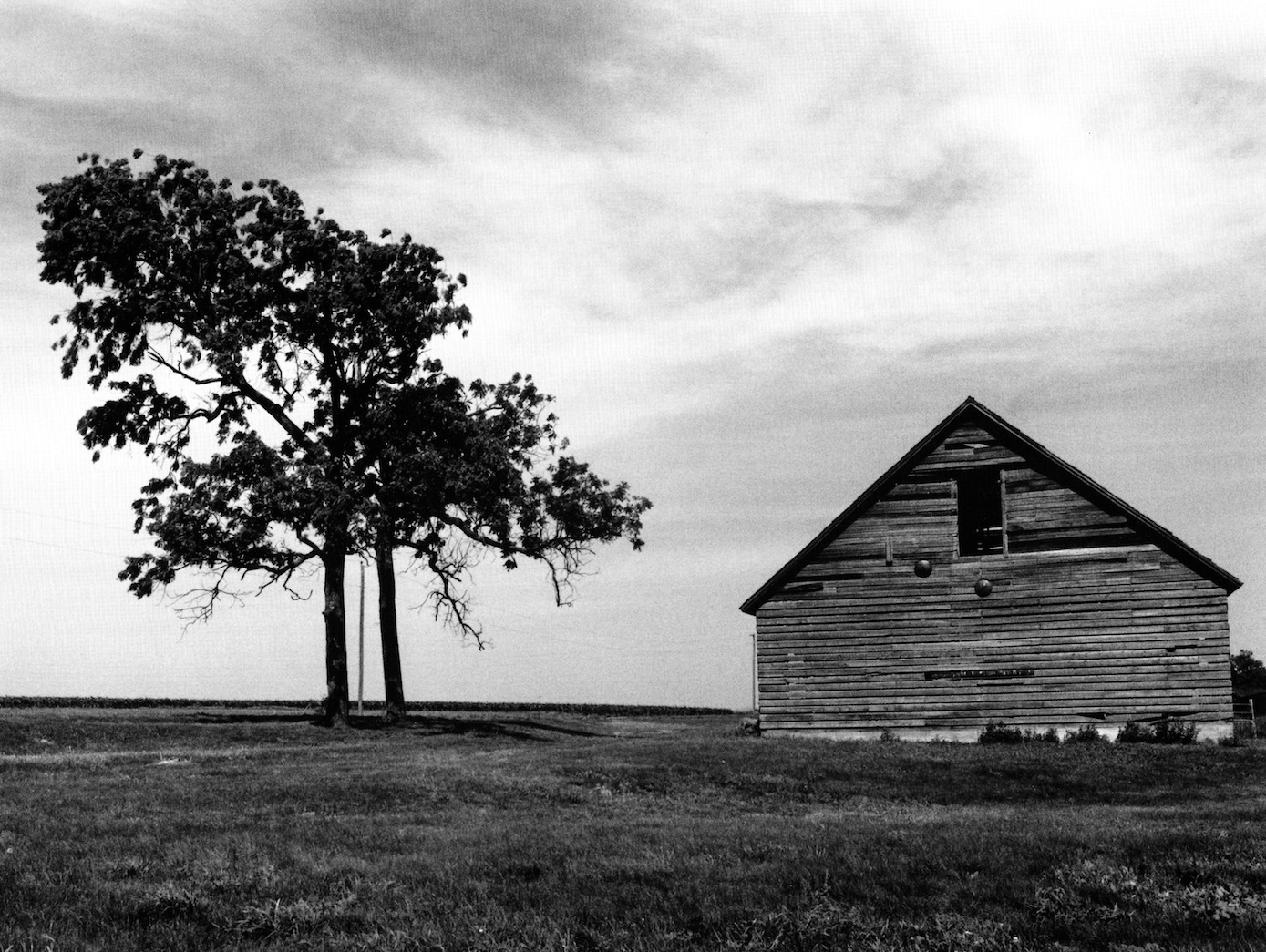
This Place, These People
Life and Shadow on the Great Plains
Nancy Warner
David Stark
(Columbia University Press)

Nancy Warner's family grew up in Cuming County, Nebraska. Between 2001 and 2008, she returned with her camera to record not the living but the remains of the past. She took shots inside abandoned farms and farmhouses: a broken curtain in a window there, an abandoned kitchen here, a wall with the paint flaking, graying --- wallpaper peeling, the dormer starting to fall: all in black and white.It's a moving collection of full page shots. There are no people, nor animals. Just the rugged old buildings abandoned, cracked supports holding up falling ceilings, wallpaper hanging down, old plaster and broken glass on the floor, cabinets disintegrating, windows askew, elaborate cracked-paint patterns in an ancient door, a tilted outhouse, the remains of a kitchen complete with dust-laden rolling pin, mixer, and cleaver. An upright Steger & Sons piano, open to the world, warped, strings exposed. Sunlight in a webbed attic.
Wait: there are people --- or rather voices of people. Warner's cousin David Stark interviewed those who stayed behind in Cuming County. Facing these bleak photographs we have quotes, a love commentary from those who continue to live amidst the ruins:
My grandfather didn't have to go far to find his wife. Just one mile down the road. That was pretty common in these parts...
They didn't call it that, but there were arranged marriages. This family with that family. Kind of like biblical times.
She's worth three camels and two goats. But with property involved.
Or,In those first years after Sue and I got married and started farming the place, there were times we cried. It was a bad time for lots of people. It was a real bad time for us, just starting out. Real bad ...
I talked to my dad. He goes, What have we got if we quit? Nothing, I said.
What have we got if we don't pack it up? I said, Maybe something ...
We gave it a try.
Warner's comments at the end of the book tell of the rhythm, the music of the people of the Midwest:
To say that their voices are laconic would not do justice to the silences. Like many Midwesterners, they prefer to listen and to wait. Put several of them together and, given this disposition, there will be a long moments of silence ... Our Nebraska friends and relatives, we learned, are comfortable with silence.
§ § § There's change here, and it is not one of decay, because those who have stayed behind are learning a new type of self-sufficiency, a new way. A new form of luxury --- at least in the work: with an "air-conditioned tractor pulling a 24-row planter." A new life, with astonishing new equipment, astonishing new sophistication, and astounding new debt.
There's lots of technology out here on these fields. I couldn't even think about doing this if I didn't know about hydraulic systems, the new vacuum system in this planter, the electrical system, irrigation system, mechanical systems, and the computer system.
Warner may be recording the death of the hardy family alone on the great plains from before, with their pigs and dogs and cows, but at the same time, she is recording the birth of a new technocracy in the 21st Century ... and a complicated new debt culture.
This Place, These People is romantic in that it offers a link to the past where individuals could buy a homestead from the government and build a life, perhaps living years in a sod house with wife and children and a few cattle and pigs and cows and neighbors a half-a-mile away who could be counted on to help in a pinch ... but, mostly, solitary, hardy country folk surviving by luck against drought, flood, tornadoes, sickness ... the tales we read in Willa Cather and Mary Austin Holley: that painfully hard life with its human wreckage, and the chance of success.
And the hope.
For this is, after all, America. As Laurie Anderson reminds us, it's The Home of the Brave.
§ § § There are three photographers represented here. First are Warner's shots from the last decade, then a few by Wright Morris from seventy years back, and, finally, an enthralling set by Solomon Butcher, a failed farmer who, in 1886 took up photography for a living. In the afterword, the writer suggests that "While Solomon Butcher's photographs portray objects in familial surroundings, Nancy Warner's photographs portray objects in abandonment."
Almost 150 years after Butcher persuaded the homesteaders to pose outdoors with their possessions, Nancy goes into the decaying buildings to photograph what has been left behind.
There are over fifty pictures in all. The country and the book are spacious, the stories are moving, and the photographs are wonderful.
--- Richard Saturday